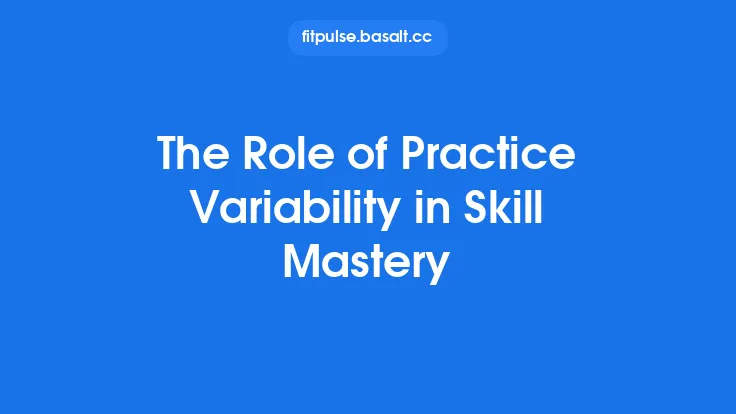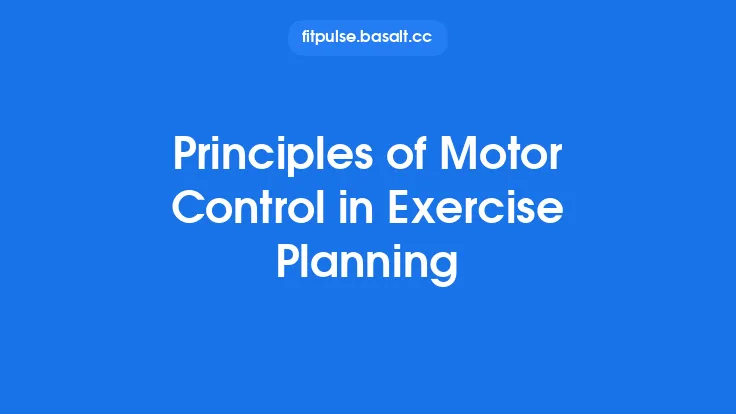Skill acquisition is a dynamic process that transforms a novice’s clumsy attempts into fluid, reliable performance. While the journey varies across individuals and tasks, researchers have consistently identified three distinct phases that capture the evolution of motor competence: the cognitive stage, the associative stage, and the autonomous stage. Understanding what characterizes each phase, how learners transition between them, and what variables accelerate or impede progress equips exercise‑science professionals with a roadmap for designing instruction, monitoring development, and ultimately fostering lasting expertise.
The Cognitive Stage: Building a Mental Blueprint
Core Characteristics
- Explicit, declarative knowledge dominates. Learners can verbalize the steps required but have little procedural fluency.
- High error rates and inconsistent timing are typical; each movement is consciously monitored.
- Long reaction times reflect the need to retrieve and apply rules for every repetition.
Neural Substrate
During this phase, activity is concentrated in prefrontal and parietal cortices, regions associated with planning, attention, and working memory. The basal ganglia and cerebellum are engaged primarily for error detection rather than fine‑tuned execution.
Learning Strategies
- Chunking: Breaking the skill into discrete, manageable sub‑components (e.g., “grip the bar,” “extend the hips,” “lock out the elbows”).
- Demonstration and verbal instruction: Providing clear, step‑by‑step explanations that the learner can mentally rehearse.
- Error‑focused feedback: Highlighting gross deviations (e.g., “keep the knee over the toe”) to prevent the formation of maladaptive patterns.
Typical Duration
The cognitive stage can span from a few practice trials for simple tasks (e.g., a basic squat) to several weeks for complex, multi‑joint actions (e.g., a gymnastics vault). The exact timeline hinges on task complexity, prior experience, and the richness of instructional input.
The Associative Stage: Refining the Motor Program
Core Characteristics
- Proceduralization begins: The learner starts to integrate the discrete steps into a smoother sequence.
- Error frequency declines, but subtle inconsistencies remain (e.g., slight timing offsets).
- Performance variability decreases, indicating a more stable motor pattern.
- Reaction times shorten as the brain relies increasingly on stored procedural memory.
Neural Substrate
The sensorimotor cortex and cerebellum become more active, supporting fine‑grained error correction and timing adjustments. The basal ganglia shift from error detection to reinforcement of successful movement patterns.
Learning Strategies
- Repetitive, focused practice on the most error‑prone components (e.g., “pause at the bottom of the squat to ensure depth”).
- Variable practice within a narrow band (e.g., altering load by ±5 % while keeping technique constant) to promote adaptability without overwhelming the learner.
- Knowledge of results (KR): Providing quantitative performance data (e.g., bar speed, joint angle) to guide fine‑tuning.
Typical Duration
For most motor skills, the associative stage occupies the bulk of the learning timeline—often several weeks to months. Mastery of the associative stage is a strong predictor of eventual autonomous performance.
The Autonomous Stage: Performance Becomes Automatic
Core Characteristics
- Procedural memory dominates: The skill can be executed with minimal conscious oversight.
- Low variability and high consistency: Movements are reproduced with precision across trials.
- Rapid, efficient execution: Reaction times are near the physiological minimum for the given task.
- Cognitive resources are freed for secondary tasks (e.g., strategic decision‑making, environmental scanning).
Neural Substrate
The motor cortex exhibits streamlined activation patterns, and the basal ganglia’s role in habit formation becomes prominent. The cerebellum continues to fine‑tune timing but does so with reduced metabolic cost.
Learning Strategies
- Maintenance practice: Low‑volume, high‑quality repetitions to preserve the skill without inducing fatigue.
- Dual‑task training: Pairing the skill with a secondary cognitive or motor task to reinforce automaticity under real‑world conditions.
- Performance monitoring: Periodic objective assessments (e.g., video analysis, force plate data) to detect subtle drift.
Typical Duration
Reaching true autonomy can take months to years, depending on the skill’s complexity and the learner’s dedication. Even after autonomy is achieved, periodic “refresher” sessions are advisable to counteract decay.
Transitioning Between Stages: What Drives Progress?
- Practice Quantity and Quality
- Deliberate repetitions that emphasize correct form accelerate the shift from cognitive to associative.
- Distributed practice (shorter sessions spaced over time) supports consolidation, especially when moving toward autonomy.
- Error Detection and Correction
- Early detection of gross errors prevents the entrenchment of faulty motor programs.
- As learners progress, the focus narrows to micro‑adjustments (e.g., slight changes in joint angle) that refine performance.
- Feedback Timing
- Concurrent feedback (during the movement) is most useful in the cognitive stage.
- Terminal feedback (after the movement) becomes more effective in the associative stage, encouraging internal error monitoring.
- Motivation and Goal Setting
- Clear, achievable milestones (e.g., “complete 10 clean squats with proper depth”) sustain engagement and provide measurable markers of stage advancement.
- Physical Maturation and Neuromuscular Development
- For younger athletes, growth spurts can temporarily regress performance, requiring a return to earlier stage characteristics until coordination catches up.
Practical Implications for Coaches, Therapists, and Trainers
- Stage‑Specific Instruction: Tailor verbal cues and demonstrations to the learner’s current stage. In the cognitive stage, use explicit, step‑by‑step language; in the associative stage, shift to “feel‑based” cues; in the autonomous stage, focus on performance metrics and strategic adjustments.
- Progress Monitoring: Employ simple checklists (e.g., “maintains neutral spine for three consecutive reps”) to gauge stage transition. Objective tools such as motion capture or inertial sensors can supplement subjective observation, especially in the associative stage.
- Programming Considerations:
- Cognitive stage: High instructional density, low volume, ample rest.
- Associative stage: Moderate volume, increased intensity, introduction of controlled variability.
- Autonomous stage: Lower volume, higher intensity, integration of sport‑specific or task‑specific scenarios.
- Error Management: Encourage learners to self‑diagnose errors before external correction is offered. This promotes internal feedback loops essential for autonomous performance.
- Retention Strategies: Even after autonomy, schedule periodic “skill audits” to ensure the motor pattern remains robust, especially after periods of inactivity or injury.
Assessing Skill Development Across the Stages
| Metric | Cognitive Stage | Associative Stage | Autonomous Stage |
|---|---|---|---|
| Error Rate | High (≥30 %) | Moderate (10‑30 %) | Low (<10 %) |
| Movement Variability | High (large SD) | Decreasing (narrowing SD) | Minimal (stable SD) |
| Reaction Time | Long (≥500 ms) | Shortening (300‑500 ms) | Short (≤300 ms) |
| Conscious Thought | Dominant | Diminishing | Minimal |
| Performance Consistency | Inconsistent | Improving | Consistent |
| Feedback Dependency | High | Moderate | Low |
Using these benchmarks, practitioners can objectively place a learner within the appropriate stage and adjust training variables accordingly.
Concluding Perspective
The three‑stage model of skill acquisition—cognitive, associative, autonomous—offers a timeless framework for dissecting how motor competence evolves. By recognizing the distinct cognitive demands, neural signatures, and performance hallmarks of each phase, exercise‑science professionals can deliver instruction that is precisely matched to the learner’s current needs. Moreover, an awareness of the factors that catalyze stage transitions enables the design of practice schedules, feedback regimes, and assessment tools that not only accelerate learning but also safeguard the durability of the acquired skill. In a field where the margin between competent execution and elite performance is often razor‑thin, mastering the nuances of these stages is a decisive advantage.





